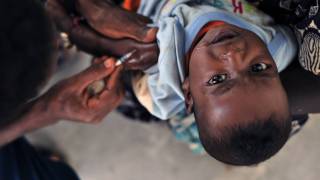Polio Eradication Loses Ground During 2019

There is some good news regarding polio vaccine research, just in time to reverse the negative trend during 2019.
A new study found the Sabin strain–based Inactivated Polio Vaccine (sIPV) demonstrated an immunogenicity profile non-inferior to that of the conventional Inactivated Polio Vaccine (IPV), and it displayed a good safety profile.
This phase 3 clinical trial found seroconversion rates in the sIPV and IPV groups were 98% and 94.1%, respectively, for type 1 poliovirus; and 98.9% and 97.7%, respectively, for type 3.
This study is good news since the World Health Organization (WHO) encourages the development of new IPVs that use less virulent strains, such as the sIPV, which carries a lower bio-safety risk and demonstrates long-term affordability and accessibility.
This is important news since the polio virus is being reported in various countries during 2019.
As of April 10, 2019, the Global Polio Eradication Initiative report said there have been 13 total polio cases during 2019, segmented between 9 Wild Poliovirus (WPV) and 4 Vaccine-Derived Poliovirus (VDPV) cases.
Polio is caused by the poliovirus, which spreads from person to person, by drinking water or eating food that is contaminated with infected feces, says the WHO.
The WHO says there are 2 types of vaccines developed to stop polio transmission: oral polio vaccine (OPV) and inactivated polio vaccine.
Both types of vaccine are necessary to eliminate polio.
On the one hand, OPV is extremely effective in protecting both the individual and the community from infecting wild polioviruses.
However, because OPV is composed of a live attenuated vaccine virus, it may result in vaccine-derived poliovirus (VDPV) emergence or vaccine-associated paralytic polio (VAPP) on rare occasions.
On the other hand, IPV carries no risk of VDPV emergence or VAPP because it contains no live virus, but IPV cannot stop the spread of poliovirus in a community, because when a person immunized with IPV is infected with WPV, the virus may still replicate in the gut and could spread to infect others.
Based on these features, the WHO has suggested that OPV must be withdrawn soon after the end of WPV transmission, to prevent VAPP emergence and VDPV, and that, during the interim, IPV should be used to maintain population immunity levels, to sustain a polio-free world.
To alert USA citizens which countries are reporting polio during 2019, the Centers for Disease Control and Prevention (CDC) have issued various Travel Alerts, which recommend that all travelers to these countries be fully vaccinated against polio.
The CDC says adults who completed their routine polio vaccine series as children should receive a single, lifetime adult booster dose of the polio vaccine.
Besides the polio vaccination, the CDC suggests you are up-to-date on several Routine Vaccines before visiting most of these countries.
Pre-trip, vaccine and medication counseling appointments can be scheduled at Vax-Before-Travel.
Updated Vaccination Schedules, CDC Price List, Report Vaccine side effects, Travel Alerts
Our Trust Standards: Medical Advisory Committee
- Immunogenicity and Safety of a Sabin Strain–Based Inactivated Polio Vaccine: A Phase 3 Clinical Trial
- An Immunogenicity and Safety Study of Sabin Inactivated Poliovirus Vaccine (Vero Cell) in 2-month-old Infants
- Sinovac Enters Technology Transfer Agreement with Intravacc to Develop and Commercialize Sabin Inactivated Polio Vaccine (sIPV)
- 8 New Polio Cases Confirmed During 2019


























